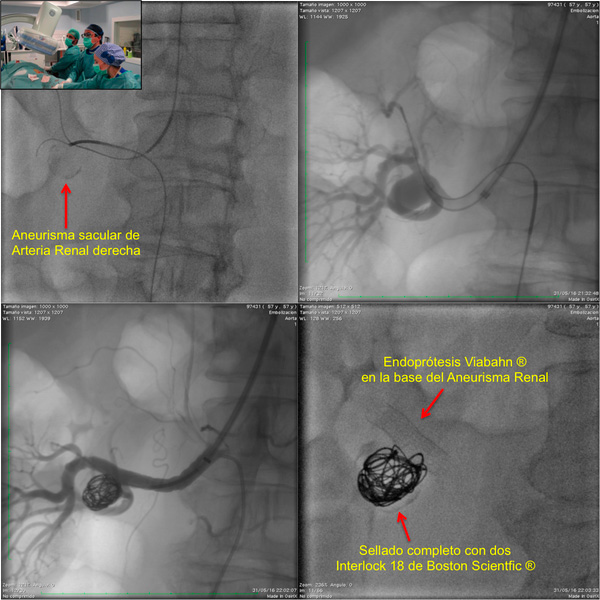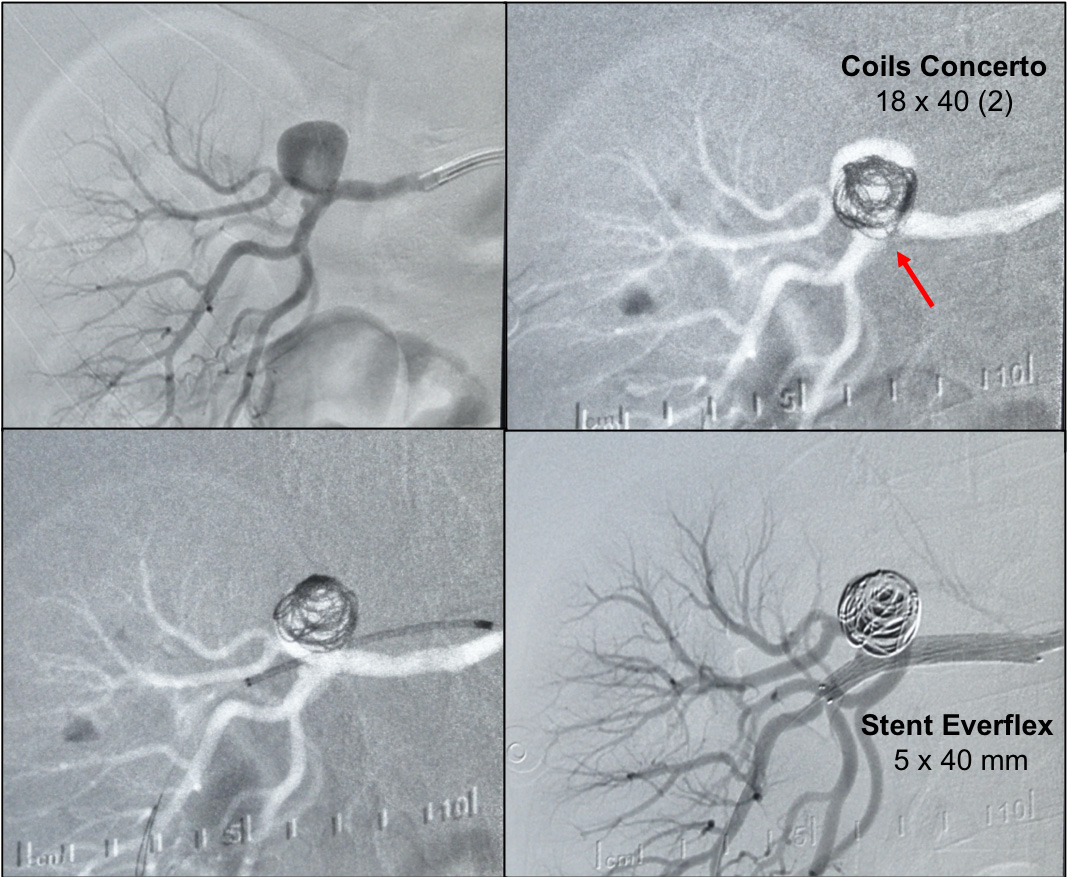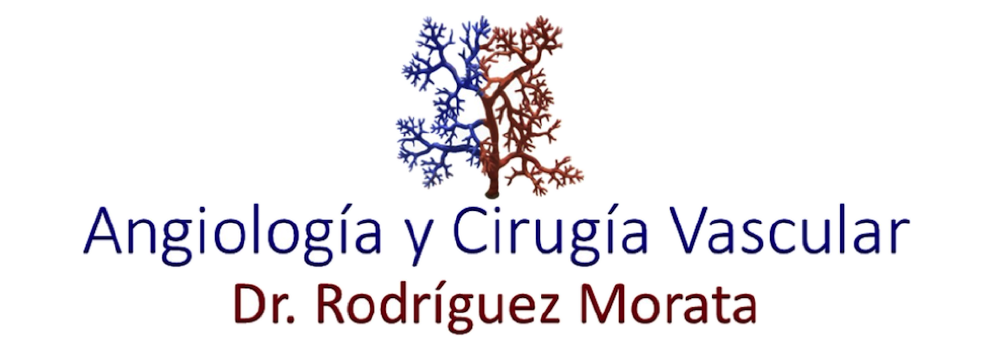This website uses cookies so that we can provide you with the best user experience possible. Cookie information is stored in your browser and performs functions such as recognising you when you return to our website and helping our team to understand which sections of the website you find most interesting and useful.
VISCERAL ANEURYSMS
Visceral Aneurysm Embolisation
Splenic – visceral Aneurysm Embolisation
Saccular renal
DESCRIPTION
What is a Visceral Aneurysm?
A visceral aneurysm is the one which derives from one of the branches of the aorta in its way along the upper abdomen. The arteries which irrigate all the abdominal organs are therefore originated from the abdominal aorta. The development of an aneurysm in one of these arteries is called visceral aneurysm.
The visceral arteries of the aorta are the celiac axis (which in turn is divided into three, common hepatic artery –irrigates the liver–, splenic artery –irrigates most of the spleen area- and coronary gastric artery –irrigates part of the stomach), superior mesenteric artery, inferior mesenteric artery and renal arteries.
Visceral aneurysms, from higher to lower frequency, are the ones of the splenic artery, renal arteries, hepatic and superior mesenteric arteries. The rest of them are extremely rare.
What importance do they have?
The problem of these aneurysms is that of the aneurysms in general: its rupture can result in fatal hemorrhage. However, only one out of three visceral aneurysms is usually detected before its rupture, since they do not commonly present any symptoms. In any case, the symptoms may be as imprecise as poorly defined mild pain, discomfort in the right or left flank and it is easy to mistaken them with digestive conditions of low medical importance.
How are they diagnosed and treated?
An abdominal ultrasound may provide us of an important approach although sometimes retroperitoneal vascular structures are not well observed due to gas interposition, swollen abdomen, etc. In cases of uncertainty, a visceral aorta angiography-ultrasound or either an abdominal CT scan must be performed.
The current first choice treatment is the aneurysm exclusion by a coated endoprosthesis interposition or either the aneurysm embolisation by materials such as coils, vascular plugs, etc. All of it will depend of the aneurysm anatomy and the Angiologist and Vascular Surgeon can choose the best technique in each case, or even in very unapproachable cases, perform its exclusion with classical surgery.





